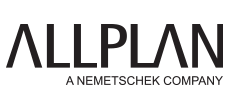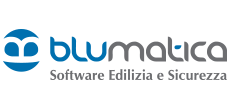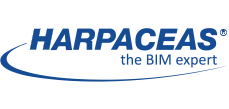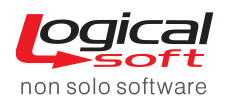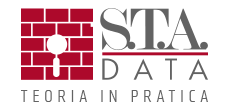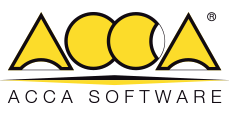Second Day ‐ Thursday 18 October 2018
SESSION V: Digitalisation & Smartness
SESSION VI: Digitalisation, Cultural Heritage and Real Estate
Digital transformation can grow incrementally or all at once.
In the second case, the key driver is certainly represented by the real estate or infrastructural element as an entity that is directly able to convey services (e.g. to the person who is interconnected and dialoguing with it: inhabitant, occupant, user, traveller, etc.).
The first elective element to understand the renewed centrality of Occupancy is given by the Workplace Management System (eFM).
The collective and individual role of the user depends, moreover, on the ability to model flows and movements and, ultimately, behaviours, in the perspective of Service Design (Oasys).
Naturally, all this does not only concern the building, but also extends to the actual infrastructure, such as the road infrastructure (MIT), and to the Future City, the cognitive and reticular city, which in turn is infrastructural (IBM).
On a different scale, however, the phenomenon concerns the real estate cultural heritage (University of Ferrara and Open Project) and urban regeneration (University of Brescia), in which the inhabitant and the user have the opportunity to interact in an innovative manner with the built environment.
9.15 – Digitalisation & Smartness
coordinated by Livia Randaccio – Tecniche Nuove
Keynote speakers
- “Digitalisation and Work Spaces” ‐ Marco Bisin, eFM
- “The management of flows of people from a BIM perspective” ‐ Peter Debney, Oasys
- “Smart Cities and Cognitive Buildings” – Russ McKay, IBM
Technology speakers
Autodesk
ONE Team
11:10 – Digitalisation, Cultural Heritage and Real Estate
coordinated by Livia Randaccio – Tecniche
Keynote speakers
- “Integrated technologies and digitalisation for the management and enhancement of existing built heritage” – Marcello Balzani, University of Ferrara
- “The challenge of implementing BIM in the restoration of cultural heritage and in the management of real estate” ‐ Giacomo Bergonzoni, Open Project
- “The Elisir Project” ‐ Massimo Deldossi, ESEB
Technology speakers
ALL PLAN
“BIM model surveying and restitution: software tools and operational strategies” – Flavio Andreatta
ICMQ
ACCA
SESSION VII: Digitalisation and Strategies
Digitalisation certainly possesses vast potential in the 4.0 context, while presenting, however, just as many limits. As a result, it is a matter of investigating the structural factors that could enable a virtuous reconfiguration of the construction and real estate market, without, on the contrary, generating new and unexpected drawbacks.
The evolution of the Sector, centred on system engineering, is at the centre of studies conducted by the World Economic Forum in collaboration with Imperial College (Imperial College).
Within the European and EU context, the Italian government’s digitalisation adoption policy is an innovative experience, linked to reasonable cogency, to be reflected upon before its entry into force (MIT).
If for the ministerial decree in question Demand is the main agent, Offer must obviously respond in a similar manner to the requests coming from the first.
Setting up a supply chain logic, possibly supported by digital platforms, implies a careful reflection on the current state of the market and on the transformative consequences that its full digitalisation would entail: the Off Site is a clear symptom (Federcostruzioni).
Within the EU BIM Task Group and, in particular, towards the German market, the largest in Europe, the Federal Ministry of Digital Infrastructures and Transport has, for some time now, launched a Road Map that has strengthened its leadership (BMVI).
That’s in addition to the institutions in charge of standardisation, which play an important role in standardising digital practices (UNI).
A reflection that involves the entire supply chain (FEDERCOSTRUZIONI; ANCE; CNI; CNAPPC; CNGeGL, ANCI)
14:10 – Digitalisation and Strategies
coordinated by Angelo Ciribini
Keynote speakers
• “Italian Ministerial Decree 560/2017: a year later” ‐ Pietro Baratono, MIT
• “The Digitalisation of the Construction Supply Chain in Italy” ‐ Luigi Perissich, Federcostruzioni
• “A Road Map for a wide Implementation of BIM” ‐ Milena Feustel, BMVI
• “The role of standardisation in the digitalisation of interventions” ‐ RDD, UNI
16.00
Round table “The challenge of digitalisation: innovation, collaboration for a sustainable and safe sector” discussed by the Presidents of ANCE, ANCI, ASSOBIM, CNAPPC, CNI, CNGeGL, FEDERCOSTRUZIONI
coordinated by Livia Randaccio – Tecniche Nuove
17.20
Technology speakers
ACCA
Dassault Systèmes
“3DEXPERIENCE Platform : The Virtual City Twin (3DEXPERIENCity)” – Mauro Faccin
Autodesk
Sponsor

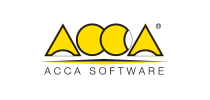







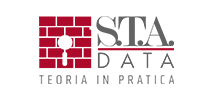

Technology Partner
